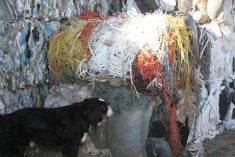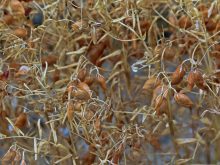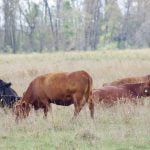Saskatchewan farmers can get help to prevent wildlife from attacking their livestock herds, but they receive no monetary compensation for any animals lost.
Mike Gollop, problem livestock specialist with Saskatchewan Environment, called predator damage to livestock a “fairly big problem” in Saskatchewan.
Producers can contact the province’s livestock predation program, administered by the Saskatchewan Sheep Development Board. It sends out trappers and others who specialize in predator control to help producers.
“We feel prevention is a good bang for the buck for producers and for ourselves,” he said.
Read Also

Canadian farmers need level playing field for regulations – says Minister MacDonald
Federal agriculture minister Heath MacDonald is urging the Canadian Food Inspection Agency and the Pest Management Regulatory Agency to speed up their decision making.
Gollop said the majority of downed livestock are not killed by predators but die from other causes and are eaten by wildlife.
“Anything that goes down out there will get scavenged,” he said.
Gollop said investigating livestock deaths for possible predator kills is a time consuming process that requires a lot of resources.
On the farm, producers have the right to protect their livestock, said Marv Hlady of Saskatchewan Environment.
“He cannot indiscriminately shoot any wolf, cougar or bear that he sees, but if it’s threatening his livestock, he may kill it,” he said.
Esterhazy cow-calf operator Greg Hemming would like to see compensation offered to farmers who are affected by such predators.
He lost a calf to a timber wolf Feb. 17. A similar incident involving two wolves two years earlier cost him another calf. He estimated the loss at $1,200.
“All I had was rocks in the field for a weapon,” he said.
He told the area conservation officer, who contracted a trapper to dispose of the offending animal.
Manitoba farmers affected by predators receive 80 percent of the value of the animal, about $200 for a bull calf or $400 for a heifer calf. Current market value is offered on animals more than 300 pounds.
The Manitoba Agricultural Services Corp. received more than 1,227 claims to Dec. 31, 2006, and paid $363,660 in damage claims to producers for losses of cattle, calves, sheep and lambs. In 2005, total predator claims were 1,139.
To qualify for assistance, a producer must report such incidents to the MASC office. After an adjuster verifies the attack, property owners can contact the Manitoba Trappers Association to deal with the predator.
Only humane trapping methods are permitted and only those predators causing the problem will be removed.
A series of problem wildlife management workshops are also offered throughout the province.
In Alberta, compensation is available for losses from wolves, grizzly bears and cougars through the environment department. Coyotes, the province’s biggest predator problem, are not on the list.
Regulations allow landholders to take immediate action on their properties to control problem wildlife. Predators and pest animals such as wolves, coyotes and beavers can be hunted without a licence during all seasons, but not trapped.














